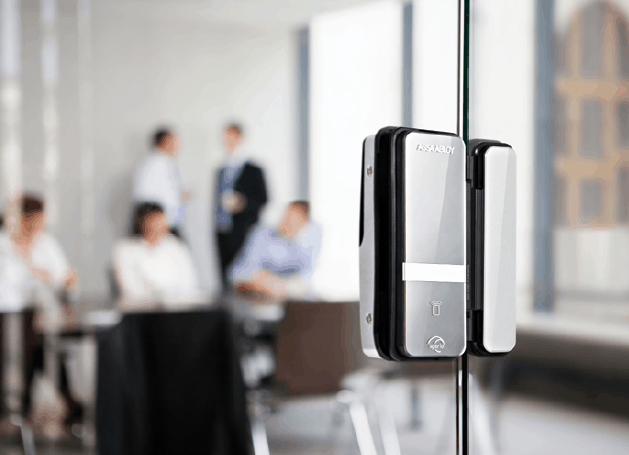There are a lot of options out there to restrict access to your commercial office. Not every access control type is right for every business. Keep reading to learn more about the building access control types to learn which solution is best for you.
Staff Monitoring.
The lowest-tech option for building access control is staff monitoring. A security guard can keep out any unwanted visitors. They can also greet your guests with a smiling face. Staff monitoring works even without internet or electricity. Keep in mind, if you do not have a team member monitoring access 24/7 you will have to also rely on another form of access control.
Keys.
Keys are the easiest to implement because it is a system that people are familiar with. They already use a key to lock their house and check their mail. There will be no education period for users. Keys also work offline, so people will be able to access the building even if there are problems with the electricity.
Unfortunately, if someone loses a key new locks must be installed. Keys can also be copied without anyone knowing. These pose huge security risks and could even become a financial burden if the keys get lost frequently. Keys are a great system if only a few people need to be able to open and close the office.
Passwords or Pin Codes.

Passwords or pin codes are an option for building access security but are best used by small teams (with great memories). They can make building access simple and easy but come with their fair share of risks.
Every time a team member leaves, you will have to reset the password. It may also have to be reset if someone forgets the current code. Passwords can also be shared very easily.
Access Badges.
Access badges are a great option for larger teams. They do not require constant monitoring and can run automatically. They will also keep a log of who, entered where and when. If one badge is lost, it can simply be deprogrammed, and a new card can be issued. There is no need to get an entirely new system if one key is lost.
The start-up cost of badges will be a little higher, but it will be worth the investment. One security risk of access badges is that badges can be stolen or given to someone else. This does bring a slight security risk to the system.
Mobile Phone Entry.

With the rise of smart devices, much of the standard physical access control hardware now offers mobile phone pass entry. Similarly to how airlines adopted the mobile boarding pass on their passengers devices, many commercial businesses have dropped keys and keycards and have moved to a standardized mobile entry system. In addition to being more cost effective than keys or keycard entry, mobile passes are scalable to large organizations looking to limit access control to employees, vendors, and guests through a single sign-on dashboard that enables and disables entry virtually.
Fingerprints.
Fingerprint scanners are valuable to companies with a high-security risk. Fingerprints cannot be duplicated, lost or stolen. They ensure that the person entering is allowed to do so. When someone is no longer employed with a company, there is no physical key that someone must retrieve. The fingerprints are simply no longer granted access.
Not sure which system is right for you? Contact us today for more help!

